8 Best Story Structures For Novels – Ranked
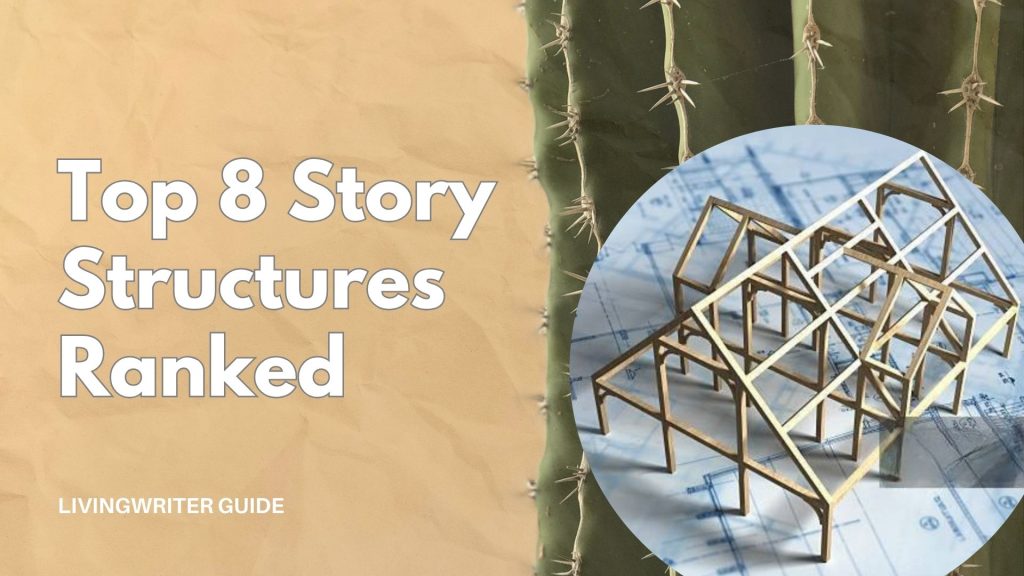
As writers, we often hear about plot and character, but the underlying story structure is the unseen skeleton that gives your narrative strength and form. Think of it like the blueprint for your house; you can build a house without one, but it’s likely to be wobbly, inefficient, and prone to collapse. A good structure ensures your story flows, your pacing is on point, and your readers remain engaged from beginning to end.
In this article, I’m breaking down ten popular story structures, assessing how much support they offer, their rigidity, and how well they truly serve the unique demands of a novel. My aim is to help you find the framework that best fits your story and writing style, providing actionable insights to elevate your craft. Let’s dig into the best story structures you can be using and why.
Table Of Contents
Best Story Structures Ranked
Before we get into the list, I want to briefly touch on the things I consider when looking at how helpful a given structure is. In general, it comes down to – How much guidance does it offer the writer, how flexabile it is within that guidance, and what story elements it helps structure. That said, without further ado, let’s get started with number eight.
8. The Three-Act Structure
The three-act structure is probably the most famous story structure, but I don’t think it’s the best story structure for novels. You have a beginning (Act 1), a middle (Act 2), and an end (Act 3). Act 1 introduces characters and conflict, Act 2 develops the conflict and raises the stakes, and Act 3 resolves everything.
You May Also Like: Three-Act Structure Example – Shawshank Redemption
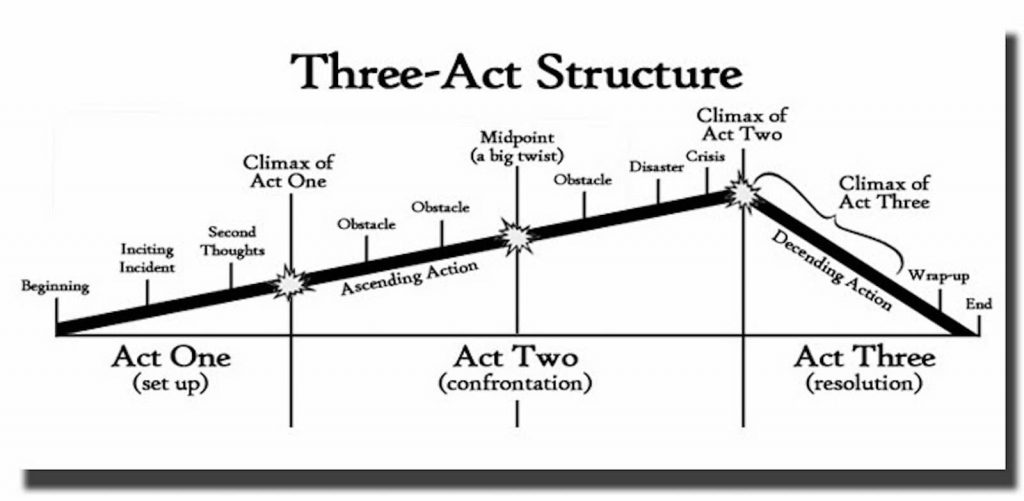
In my experience, this works better for screenplays than novels. While the general “beginning, middle, and end” structure is a basic guiding idea, it doesn’t offer much specific direction and can leave writers on their own in terms of pacing the story and incorporating subplots.
7. Freytag’s Pyramid
Created by Gustav Freytag, this structure has five sections: exposition, rising action, climax, falling action, and denouement (resolution). It’s not the worst, but it can be misleading visually, as the climax appears to be in the middle when, in fact, it’s generally much closer to the end of the story.
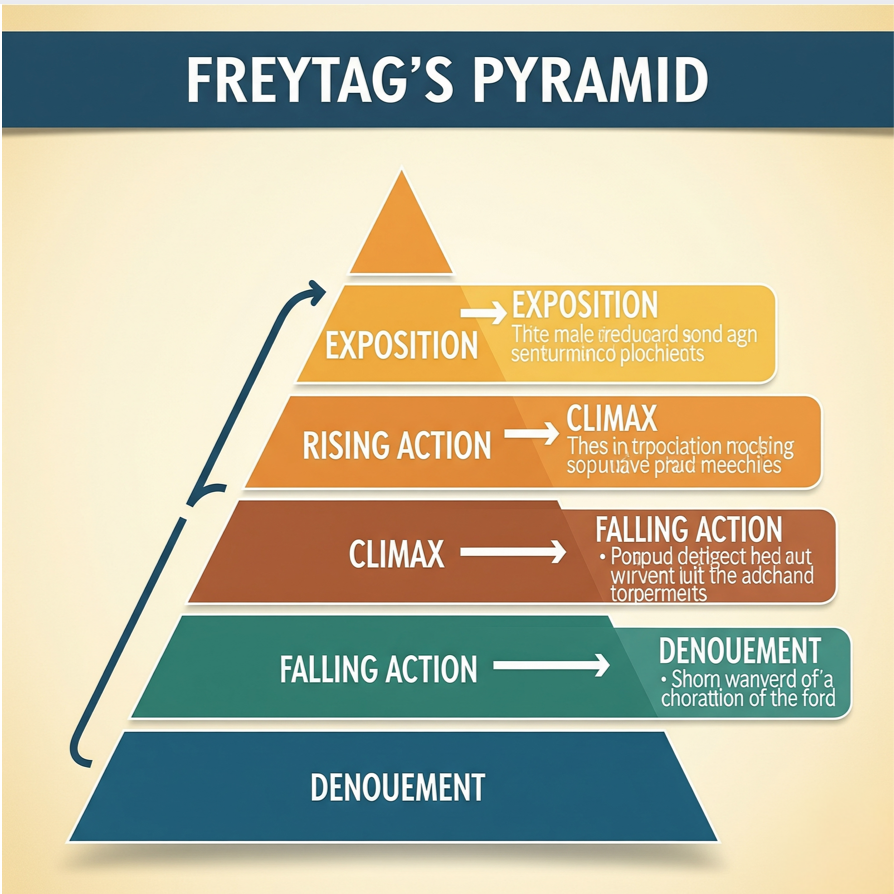
I’ve seen this work well for tragedy genres or stories where a clear “point of no return” happens relatively early, leading to an inevitable downfall. For a classic, straightforward narrative, it’s a decent guide. However, its linear nature doesn’t always account for the intricate subplots and character detours common in longer fiction.
6. Kishotenketsu Method
This Japanese structure has four sections: Ki (intro), Sho (development), Ten (twist), and Ketsu (conclusion). It’s fairly simple and works well for Eastern storytelling where characters don’t necessarily undergo radical change, and overt conflict isn’t always central. It’s often seen in folk legends, jokes, and anecdotes.
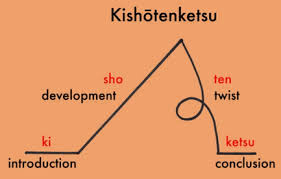
From my experience, Kishotenketsu doesn’t work well for complex, Western-style novels that have significant character arcs and escalating conflict. The “twist” can be powerful, but without the emphasis on rising tension and protagonist’s struggle, it can leave readers slightly confused. That said, the Kishotenketsu method works well if you’re writing something that steps outside traditional conflict-driven storytelling.
5. Fictean Curve
This structure, popularized by John Gardner, is all about escalating tension. You start in the middle of the action and build a series of rising actions, each with its own mini-climax, leading directly into the next. There’s no slow build-up; it’s a relentless climb.
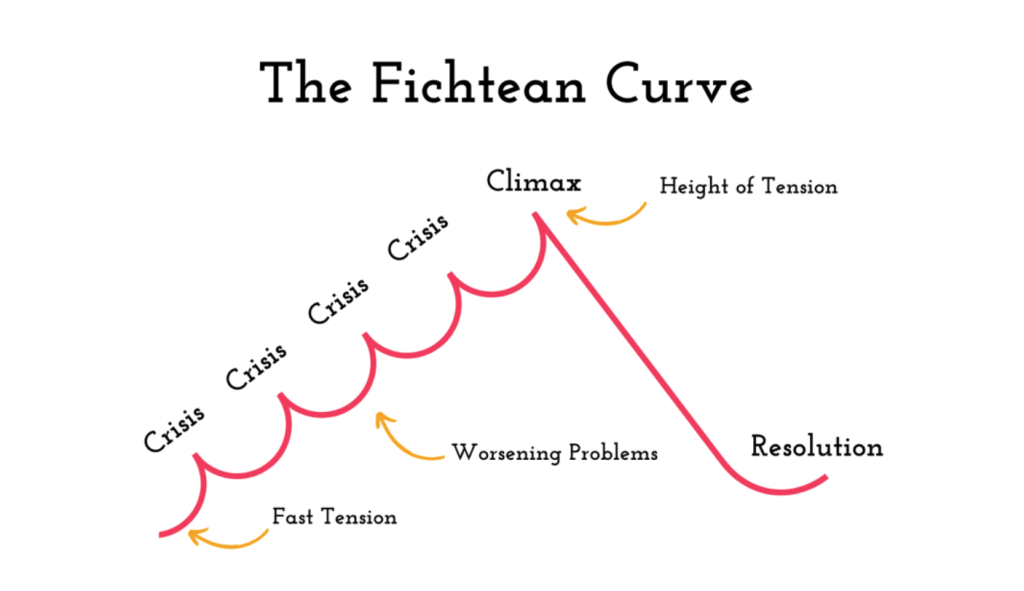
The best thing about the Fichtean Curve is that it prioritizes conflict. If you manage to have a plot with ever escalating conflict, you’re well on your way to an exciting book. Conflict keeps readers invested, which is great.
However, this rollercoaster of intensity can take some practice to sustain for longer novels, and it sometimes sacrifices slower character development or world-building for pure plot progression, if you’re not careful. But with some consideration, you can really hit the ground running with The Fichtean Curve and keep your foot on the gas until the resolution.
4. The Snowflake Method
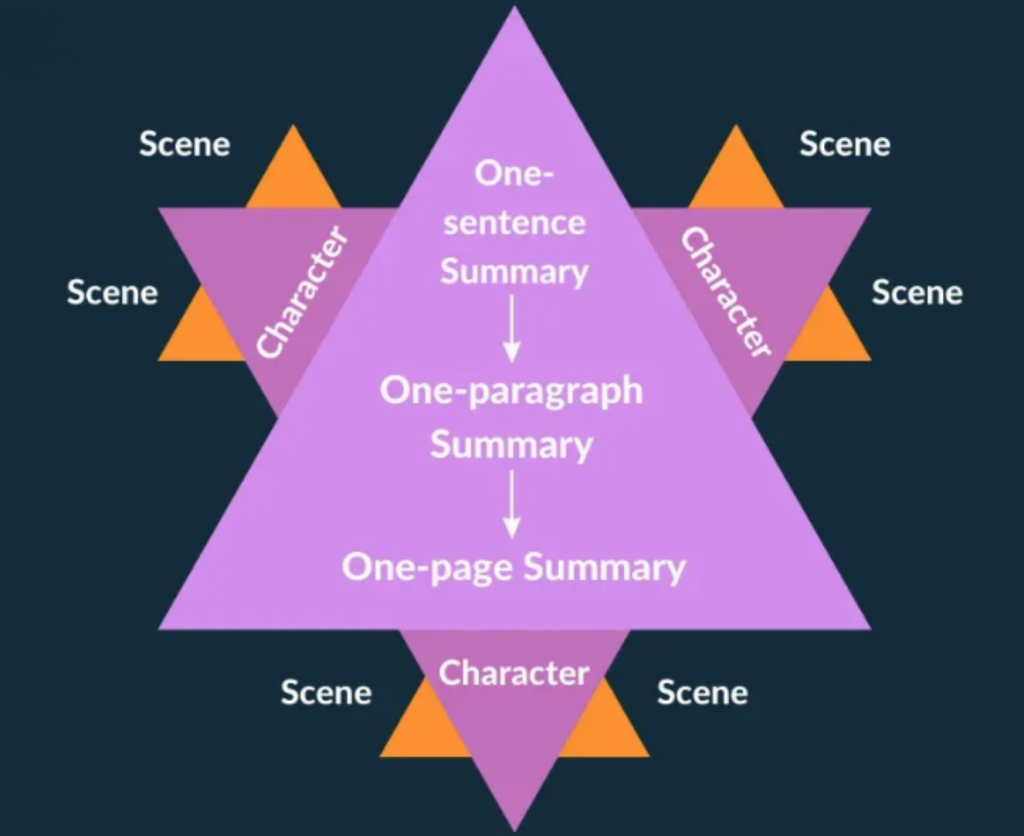
This is an expanding complexity system where you start with a single sentence description of the story, then expand it to a paragraph, then a page. From there, you start to build out character arcs, plot points, and eventually a complete scene-by-scene outline.
You May Also Like: How To Write A Scene – 10 Great Tips
I’m a big fan of the Snowflake Method for its organic growth, and I think you will be too. It actually offers a lot in the way of structure, but allows for a ton of creativity. In short, it’s a fun, effective structure to use.
It’s very character-driven because, for example, you’re forced to develop your protagonists’ arcs early and focus less on just plot mechanics. In my opinion, it’s perfect for writers who want a solid plan without feeling constrained.
3. Seven-Point Story Structure
Developed by Dan Wells, the Seven-Point Story Structure focuses on seven key plot points: Hook, Plot Turn 1, Midpoint, Plot Turn 2, Climax, Resolution. It emphasizes a symmetrical structure, often working backward from the climax to ensure all plot points build effectively.
I particularly like the Seven-Point structure for the focus on symmetry and the two “Pinch Points,” which really help maintain sustained tension throughout the middle of your novel. It’s flexible enough for various genres and helps you build a strong plot without getting lost in too many minor beats.
Overall, it’s a great tool for making sure your plot points hit at the right times and that the story escalates naturally. Here is a look at the seven points:
- Hook: Something to grab the reader’s attention and introduce the protagonist and their current situation.
- Plot Turn 1 (Inciting Incident): An event that completely changes the protagonist’s world and starts their journey.
- Pinch Point 1: External pressure applied to the protagonist, revealing the antagonist’s power or the main conflict’s difficulty.
- Midpoint: The point of no return; the protagonist moves from reactive to proactive. Often a “false victory” or “false defeat.”
- Pinch Point 2: Another external pressure point, raising the stakes even further and pushing the protagonist to their limits.
- Plot Turn 2 (Climax Setup): The protagonist makes a final, desperate plan or realizes what truly needs to be done.
- Resolution: The final confrontation or solution to the main conflict.
Each point is fairly intuitive, and the structure is fairly simple. While these are selling points, there are times when I feel like it doesn’t offer inexperienced writers quite as much guidance and structure as some others. That said, with a little practice, this structure will cover all your main bases.
2. Save the Cat Beat Sheet
Originally made for screenplays by Blake Snyder, the Save the Cat! Beat Sheet is a 15-step method that has translated incredibly well to novels. It offers fantastic guidance for pacing and how to integrate subplots into the narrative, which, let me tell you, you need!
Follow the “Beats” and you’ll start by laying the groundwork for a compelling “A-plot” while weaving in character development and theme early. Beyond that, you have a clear queue for your subplot and midpoint before building toward the climax with “All is Lost” and “Dark Night of the Soul,” which are crucial.
Before you try it, it can look quite prescriptive, but it does allow for flexibility and variation, and it excels at teaching you how to structure compelling, satisfying stories with multiple moving parts. Here is a basic rundown of the 15 Beats:
- Opening Image: Sets the tone, mood, and genre.
- Theme Stated: A character, often not the protagonist, hints at the story’s theme.
- Set-up: Introduce the protagonist’s world, flaws, and what’s missing.
- Catalyst: The inciting incident that kicks off the story.
- Debate: The protagonist considers whether to engage with the catalyst.
- Break into Two: The protagonist commits to the new world/adventure.
- B Story: A subplot (often romantic or mentorship) introduced, carrying the theme.
- Fun and Games: The promise of the premise; characters explore the new world.
- Midpoint: A false victory or false defeat; stakes are raised.
- Bad Guys Close In: Internal and external pressures mount; the hero’s flaws are exposed.
- All Is Lost: The lowest point; the protagonist’s world crumbles. This is where you really amp up the despair.
- Dark Night of the Soul: The protagonist reflects on their mistakes, finds clarity, and rediscovers their motivation. This internal reckoning is crucial for the climax.
- Break into Three: The protagonist commits to a new plan, armed with new understanding.
- Finale: The climax; the protagonist executes their plan and confronts the main conflict.
- Final Image: Shows how the protagonist and their world have changed.
1. The Hero’s Journey

Popularized by Joseph Campbell and later adapted for writers by Christopher Vogler, The Hero’s Journey (or Monomyth), to me, is perhaps the most pervasive and influential story structure. It outlines a universal pattern of adventure and transformation, charting the protagonist’s journey from their ordinary world through trials and tribulations to a triumphant return.
I think the Hero’s Journey is the best story structure overall because it provides a clear, yet adaptable framework for not just plot progression but also character transformation, which is a phenomenal thing to have in your work.
It’s “step-by-step” enough to guide writers nearly every step of the way. But the almost universal, archetypal aspect of each step allows you to usually not feel boxed in and adjust The Hero’s Journey to nearly any story or genre.
Story Structures On LivingWriter
Having ranked my top 8 story structures, I have to mention applying them with Livingwriter. Voted the best writing app of 2025, LivingWriter has all the high-ranking story structures I mentioned built directly in for you to add to your manuscript. This gives you a visual framework in which to write that makes it infinitely easier to know where you’re at with the plot at any given time and where you’re going next.
When you start a new manuscript, you can choose with structure you’d like to apply as a template. You’ll notice several of the structures mentioned above, including the Hero’s Journey, the Beat Sheet, the Seven Point Structure, and the Three-Act Structure.
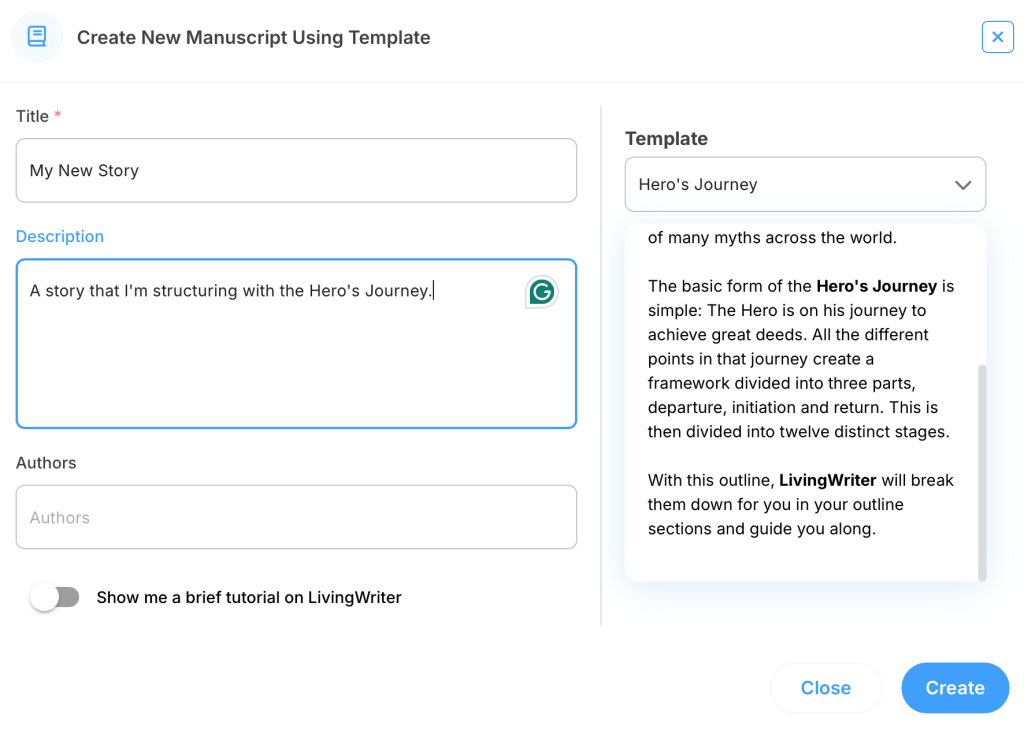
Whichever structure you pick, it will be applied to your manuscript, and each section or step will be visible and broken down for you in your outline section to guide you along as you work. You can add chapters directly to each section of the structure, so you never have to guess which chapters go where.
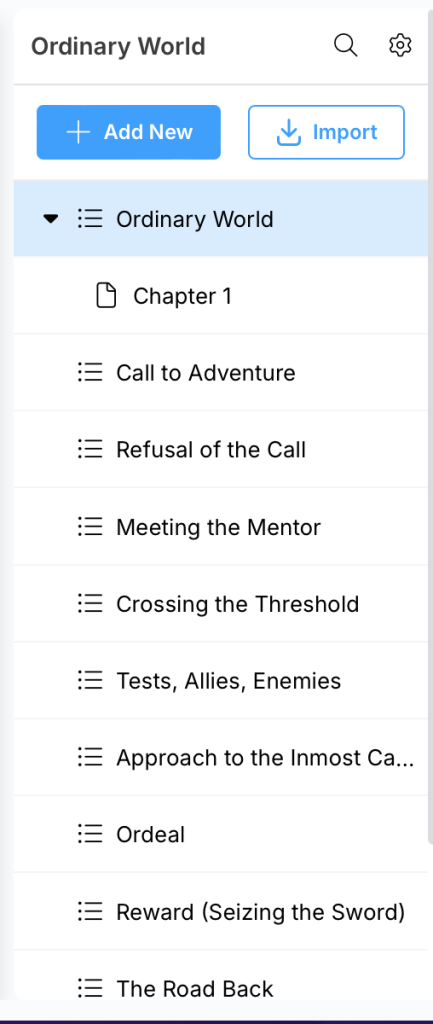
In this example of the Hero’s Journey, you can see all of the key plot points/character development arcs by name and in order. From there, you simply click the given section, add a chapter, and start to work. Taking the structure from a concept that you’ve got to try to map out in your mind, you now have a physical representation, which makes even the best story structures that much better.